Greening the City: AAPC India Empowers Employees in Urban Forest Creation
AAPC India Private Limited, the nation’s largest education and credentialing organization for medical coders, billers, auditors, practice managers, an Read more
Project Update 3
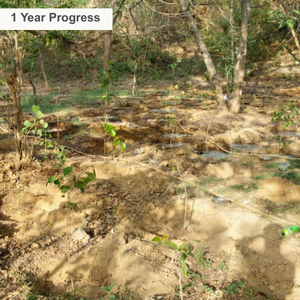
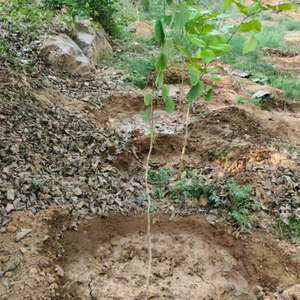
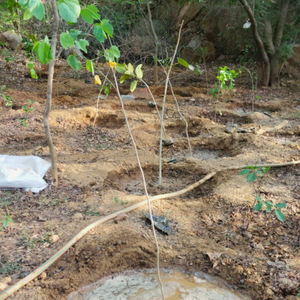
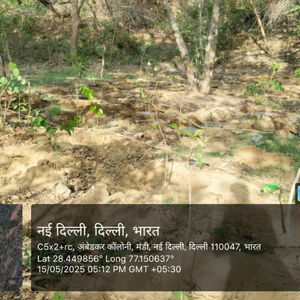
Project Update 2


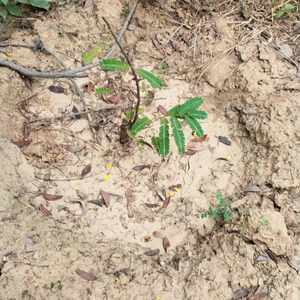
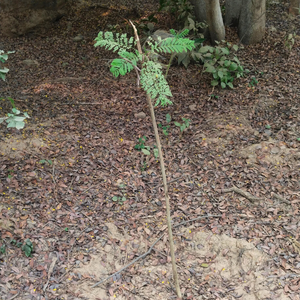

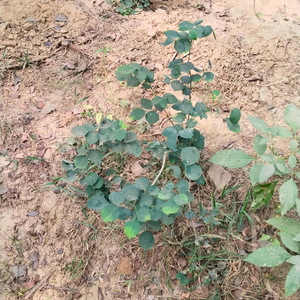
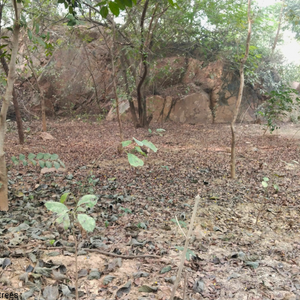
Project Update 1
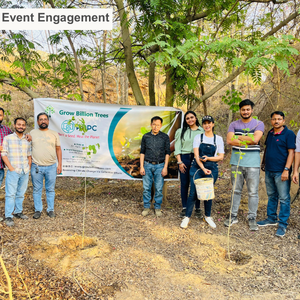
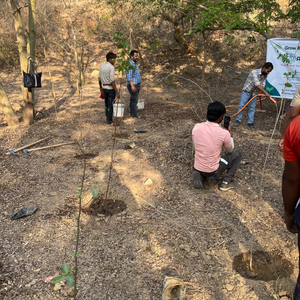
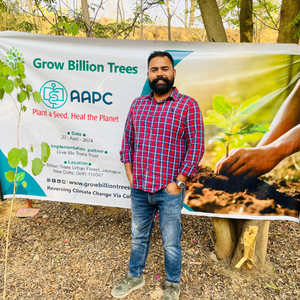
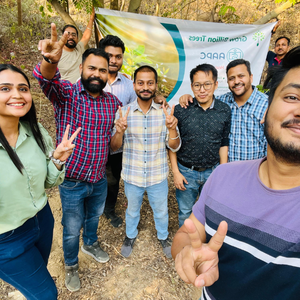
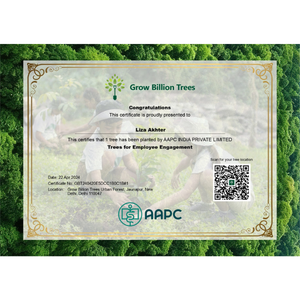

Digital Forest
Forest with 30 Trees planned
Want to plant your tree now?
Plant a Tree @ 299Trees Planted
Greening the City: AAPC India Empowers Employees in Urban Forest Creation
AAPC India Private Limited, the nation’s largest education and credentialing organization for medical coders, billers, auditors, practice managers, and other healthcare professionals, has taken a significant step toward sustainability through its tree plantation initiative, rooted in the urban forest concept. Urban forests are dense, naturalized green spaces created within cities to combat the challenges of urbanization, such as pollution, loss of biodiversity, and rising temperatures. This initiative by AAPC aims to transform urban areas into thriving ecosystems by planting native tree species that promote biodiversity, improve air quality, and provide habitats for wildlife.
Employees enthusiastically participate in planting and watering the trees, connecting with nature while fostering teamwork and a sense of purpose. By preparing the site beforehand, AAPC ensures that the activity is seamless and impactful. Urban forests offer numerous benefits, including carbon sequestration, temperature regulation, noise reduction, and improved mental health for those living nearby. For AAPC employees, this initiative not only strengthens their environmental stewardship but also enhances their workplace satisfaction and well-being.
"Plant a seed, heal the planet" reflects AAPC India Private Limited’s core commitment to environmental responsibility. Through their tree plantation initiatives, they aim to restore green cover, enhance biodiversity, and create a sustainable future for communities and the planet.
Project Planning & Execution
No of Trees: 30 trees
Plantation Location: Baba Neem Karoli Ashram Hanuman Mandir, Jauanapur, New Delhi 110047
Plantation Date: 22nd April 2024
Name of Species: Karanj, Lasota, Sehtut, and Shisam
Species Selection & Its Benefits:
AAPC India Private Limited's tree plantation initiative embraces a carefully selected mix of native and ecologically beneficial species, chosen to align with the local climate, urban landscape, and environmental priorities. The selection includes Karanj, Lasota, Sehtut, and Shisam, a diverse set of trees that together offer ecological, aesthetic, and socio-environmental value.
Karanj, Lasota, Sehtut, and Shisham are multipurpose tree species with significant ecological and economic value. Karanj improves soil fertility through nitrogen fixation and is also valued for its oil-rich seeds used in biofuel and traditional medicine. Lasota is drought-resistant, provides edible fruits, and supports rural livelihoods in arid regions.
Sehtut, commonly known as mulberry, is essential for sericulture as it provides food for silkworms and also helps in preventing soil erosion. Shisham is a fast-growing timber species known for its strong, durable wood and its role in stabilizing soil, making it ideal for urban forestry and land restoration efforts.
Together, these 4 species reflect AAPC India Private Limited’s commitment to creating greener, healthier spaces that benefit both the environment and the community. This initiative is more than a symbolic gesture; it’s a step toward building an urban ecosystem where sustainability, biodiversity, and human well-being go hand in hand.
Beneficiaries Details
-
Target Population: Employees, stakeholders, and local community members of Jaunapur
-
Age Group: All age groups focus on adults to seniors
-
Gender: Inclusive of all genders
- Social & Economic Status: Open to all social and economic backgrounds, emphasizing community involvement
Planting Methodology and Its Advantages
Urban Forestry: An urban forest is a network of trees, shrubs, and vegetation strategically planted in urban areas to enhance biodiversity, improve air quality, reduce the urban heat island effect, and provide green spaces for community well-being. It helps mitigate climate change by absorbing carbon dioxide, promotes mental health through accessible green areas, and supports local wildlife by creating habitats. Urban forests play a vital role in building resilient, sustainable cities that benefit both the environment and the people who live in them. These plantations are essential in offsetting the negative impacts of rapid urbanisation by creating cooler, cleaner, and more sustainable urban environments. With limited space in cities, thoughtful species selection, soil preparation, and ongoing maintenance are crucial for the long-term success of urban plantations.
Advantages of Urban Forestry
-
Climate Regulation and Cooling Effect: Urban forests help mitigate the urban heat island effect by providing shade and cooling through transpiration, lowering temperatures in cities, reducing the need for air conditioning, and conserving energy.
-
Improved Air Quality: Trees absorb pollutants like carbon dioxide, nitrogen oxides, and particulate matter, leading to improved air quality and reducing the risk of respiratory illnesses in urban areas.
-
Stormwater Management and Flood Prevention: Urban forests improve the soil’s ability to absorb and retain water, reducing stormwater runoff, preventing flooding, and promoting groundwater recharge, thus helping manage water resources efficiently.
-
Soil Erosion Control: The deep root systems of trees prevent soil erosion, especially in areas with heavy rainfall or steep slopes, stabilizing the land and reducing soil loss in urban environments.
-
Aesthetic and Recreational Value: The transformation of unused spaces into green zones adds aesthetic value to the area and provides employees and local communities with recreational spaces, making the workplace more enjoyable.
-
Enhanced Community Engagement and Well-being: Urban forests provide accessible green spaces where communities can engage in recreational activities, improving mental health, reducing stress, and fostering a sense of environmental stewardship among residents and employees.
-
Increased Property Value: Properties located near urban forests or green spaces tend to have higher market values, benefiting local property owners and increasing the overall appeal and livability of the area.
-
Noise Reduction: Urban forests act as natural sound barriers, reducing noise pollution and creating quieter, more peaceful surroundings.
Activities During Tree Plantation
The tree plantation drive organised by AAPC India Private Limited on 22nd April 2024 at Baba Neem Karoli Seva Trust, New Delhi, was marked by enthusiastic employee participation, reflecting a shared commitment to sustainability and community well-being. This initiative strengthened AAPC India Private Limited's environmental goals but also united employees around a cause that extends far beyond the workplace, building a greener, healthier planet for the future.
Preparations for the day began with a well-structured layout of the site, including pre-dug pits and carefully chosen saplings known for their ecological and cultural value. Employees actively engaged in the planting process, learning about the species and their role in strengthening the local ecosystem. The hands-on experience allowed participants to reconnect with nature and appreciate the value of green interventions in urban landscapes.
The event concluded with laughter, smiles, and group photographs, capturing moments of unity and fulfilment. More than just planting trees, AAPC India Private Limited’s initiative planted hope and a greener vision for the future, leaving behind not only new life in the soil but also a lasting sense of collective achievement.
Conclusion Elements
Impact
Direct Impact
|
Parameters |
Values |
References |
|
No. of Trees Planted |
30 |
|
|
Green Cover (Acres) |
0.02 |
|
|
Carbon Sequestration Potential (KG) |
20 |
Small to medium-sized trees can sequester around 10–48 kilograms (22–106 pounds) of CO₂ annually. https://growbilliontrees.com/blogs/knowledge/how-much-co2-can-one-tree-absorb |
|
Carbon Sequestration by 30 mature trees ( Tons/year) |
0.6 Tons |
No. of Trees x Carbon Sequestration by 1 mature tree per year |
|
Carbon Credit Equivalent |
0.6 |
One carbon credit is equivalent to one tonne of carbon dioxide or the equivalent amount of another greenhouse gas. |
|
Carbon Footprint of an avg Indian Citizen (Tons/Year) |
1.8 |
|
|
Offsets Annual Carbon Footprint of (Adults) |
1 |
Carbon offset by 30 mature trees per year / Carbon Footprint of an avg Indian Citizen per year |
* This impact analysis is forward-looking (An urban-forest project matures in 3-5 years)
Indirect Impact
Community Impact
-
Improved Public Health: By improving air quality and reducing urban heat, the project indirectly contributes to better public health. The presence of green spaces encourages outdoor activities, which can reduce stress levels, promote mental well-being, and decrease the incidence of respiratory diseases.
-
Environmental Awareness: Involving communities in urban forestry raises awareness about environmental conservation and promotes sustainable practices in daily life.
-
Employee Morale: The initiative fostered a sense of pride and connection among employees, strengthening team bonds and their alignment with the company’s values.
-
Inspiration for Change: By showcasing the potential of urban forestry, the project has encouraged other organisations and local communities to undertake similar initiatives.
-
Cultural Shift: The initiative instilled a mindset of sustainability and environmental care among participants, creating advocates for green practices in their personal and professional lives.
Environmental Impact
-
Carbon Sequestration: The trees planted through AAPC India Private Limited's urban forestry initiative absorb carbon dioxide, acting as carbon sinks and helping mitigate climate change by reducing greenhouse gas emissions.
-
Soil Health Improvement: The tree planting initiative enhances soil health by enriching it with organic matter, improving soil fertility and structure, which supports the growth of surrounding vegetation.
-
Erosion Prevention: Tree roots help stabilise the soil in urban areas, preventing erosion caused by wind and water, while safeguarding nearby properties and infrastructure from potential damage.
-
Biodiversity Conservation: By creating green spaces, the initiative supports local biodiversity, providing habitats for various species, pollinators, and beneficial insects, and enhancing the ecological balance in urban areas.
-
Water Cycle Regulation: The urban forestry project helps regulate the water cycle by improving water retention in the soil, recharging groundwater levels, and reducing surface runoff, leading to a more balanced and sustainable urban environment.
-
Microclimate Regulation: Trees planted through this initiative moderate temperature extremes, reduce wind speeds, and increase humidity, creating a favourable microclimate for both the community and the urban ecosystem.
Achievements
SDG Goals Achieved through Urban Forestry
-
SDG 3: Good Health and Well-Being: AAPC India Private Limited’s urban forestry initiative improves air quality and introduces green spaces that support physical and mental well-being. These natural environments help reduce stress, encourage outdoor activity, and foster healthier lifestyles in urban settings.
-
SDG 6: Clean Water and Sanitation: Through tree planting, AAPC India Private Limited promotes water conservation by aiding groundwater recharge, reducing runoff, and enhancing soil moisture retention, contributing to sustainable urban water systems.
-
SDG 7: Affordable and Clean Energy: By reducing the urban heat island effect, the plantation helps moderate city temperatures and decrease dependence on energy-intensive cooling systems, thus promoting energy efficiency and sustainability.
-
SDG 8: Decent Work and Economic Growth: The initiative creates green jobs in nursery management, plantation, and ecosystem maintenance, supporting local livelihoods and advancing the green economy.
-
SDG 9: Industry, Innovation, and Infrastructure: AAPC India Private Limited incorporates sustainable green practices into urban infrastructure, showcasing innovative approaches that integrate technology with environmental resilience.
-
SDG 10: Reduced Inequalities: The initiative is inclusive, involving employees from all backgrounds in environmental action. By developing accessible green zones, AAPC India Private Limited ensures shared environmental and health benefits across communities.
-
SDG 11: Sustainable Cities and Communities: By increasing green cover and enhancing biodiversity in dense urban areas, AAPC India Private Limited contributes to building sustainable, resilient, and livable cities.
-
SDG 12: Responsible Consumption and Production: AAPC India Private Limited's eco-initiatives reflect a commitment to sustainable practices, emphasising efficient use of resources and long-term ecological responsibility.
-
SDG 13: Climate Action: The planted trees help sequester carbon dioxide, reduce emissions, and buffer against climate change impacts, actively supporting global climate goals.
-
SDG 15: Life on Land: By restoring green spaces with native and fruit-bearing trees, the initiative strengthens biodiversity, supports wildlife, and contributes to a thriving urban ecosystem.
-
SDG 16: Peace, Justice, and Strong Institutions: By fostering inclusive decision-making and community-led governance, AAPC India Private Limited strengthens local environmental stewardship, ensuring transparency and collaboration for sustainable urban development.
-
SDG 17: Partnerships for the Goals: The initiative thrives on collaboration with local communities, environmental organisations, and partners such as Grow Billion Trees. AAPC India Private Limited strengthens environmental partnerships to drive impactful urban sustainability and afforestation efforts.
ESG Achieved through Urban Forestry
-
Environmental Impact: AAPC India Private Limited's urban forestry initiative makes a meaningful contribution to environmental sustainability. By planting a diverse mix of native and beneficial tree species, the company enhances local biodiversity, supports pollinators and wildlife, and strengthens urban ecosystems. These trees act as natural carbon sinks, helping to reduce atmospheric CO₂ levels and combat climate change. Additionally, the plantation improves climate resilience by regulating ambient temperatures, reducing the urban heat island effect, improving air quality, and increasing groundwater recharge. This forward-looking effort supports long-term ecological balance and a healthier environment for future generations.
-
Social Impact: AAPC India Private Limited's urban forestry initiative fosters social responsibility and community well-being by involving employees and local stakeholders in environmental stewardship. Through active participation in tree planting and awareness efforts, the initiative cultivates a deeper connection with nature and promotes collective action for sustainability. The creation of green spaces improves air quality, encourages outdoor activity, and contributes to better mental and physical health. Additionally, the project supports green jobs through sapling plantation and ongoing maintenance, while promoting inclusivity by ensuring access to cleaner, greener environments for all communities, including underserved groups. This initiative helps build a more resilient, equitable, and environmentally conscious society.
-
Governance Impact: AAPC India Private Limited showcases strong environmental leadership and responsible governance through its urban forestry initiative. By integrating sustainability into its core CSR strategy, the company promotes transparency and accountability in project planning, execution, and reporting. Collaborating with environmental organisations and local communities, AAPC India Private Limited ensures that its afforestation efforts are inclusive, impactful, and aligned with broader ecological goals. This governance approach not only supports environmental and social outcomes but also reflects the company’s long-term vision for sustainable growth and ethical corporate responsibility.
Building Communities
One of the most impactful outcomes of AAPC India Private Limited's urban forestry initiative was the sense of unity and collaboration it cultivated. By involving employees, local communities, and volunteers, the project became a collective mission to create sustainable urban green spaces, fostering a shared commitment to a greener future.
-
Empowering Communities: Participants became active contributors, gaining knowledge about urban forestry practices and taking ownership of the initiative. This empowerment strengthened their connection to the environment and reinforced their role as environmental stewards.
-
Fostering Partnerships: The project brought together diverse stakeholders, including AAPC India Private Limited, Grow Billion Trees, and local communities, highlighting the value of collaboration in achieving environmental and social goals.
-
Creating a Ripple Effect: As communities experienced the benefits of urban forestry, their enthusiasm inspired others to adopt similar practices, amplifying the initiative's positive impact across the region.
This initiative demonstrates that environmental sustainability thrives when rooted in collective effort. It’s not just about planting trees, it’s about planting hope, collaboration, and a shared vision for a healthier and greener future.
Commitment by Grow Billion Trees
-
Ensuring Tree Survivability: GBT prioritises native species, continuous monitoring, and soil health improvement using organic fertilisers. These efforts ensure sustainable growth and benefit communities.
-
Transparency & Accountability: GBT provides detailed reports on tree growth, survival rates, and carbon benefits, using geo-fencing and regular updates to maintain transparency and effectiveness.
-
Sustainable Plantation Efforts: GBT implements projects that balance environmental, social, and economic goals, addressing issues like urban heat islands and degraded farmlands. These efforts promote ecological balance, livelihoods, and long-term climate resilience.
-
Enhancing Ecosystem Health: By selecting native species and creating diverse habitats, GBT enhances biodiversity and ecosystem resilience, ensuring long-term ecological health and supporting wildlife.
-
Long-Term Impact: GBT’s initiatives tackle environmental challenges, foster climate resilience, and promote sustainable development while reducing carbon footprints.
Acknowledgment
We at Grow Billion Trees extend our heartfelt gratitude to all those who have contributed to the success of the urban forestry initiative across Jaunapur, New Delhi. This project, which combines environmental sustainability with employee engagement, would not have been possible without the support and collaboration of our dedicated employees, local authorities, and partners. Their collective efforts in planting and nurturing over 30 trees are helping create a greener and more resilient future for urban communities. We are thankful for their commitment to fostering biodiversity, improving air quality, and promoting a sustainable future.
To AAPC India Private Limited - We sincerely thank you for your commitment to sustainability and your proactive role in shaping a greener urban future through your plantation drive. Your support for urban forestry at Baba Neem Karoli Ashram Hanuman Mandir, Jaunapur, New Delhi has contributed meaningfully to enhancing biodiversity, improving air quality, and building ecological resilience. This initiative also saw enthusiastic participation from your employees, reflecting a strong culture of environmental awareness and teamwork. Through this collective effort, AAPC India Private Limited has not only demonstrated environmental responsibility but also inspired others to take meaningful action for a healthier, more sustainable tomorrow.
To Our Ground Partners and Volunteers - Your expertise, dedication, and passion for environmental sustainability have been crucial to the success of AAPC India Private Limited's urban forestry initiative. Through your collaborative efforts, we have made meaningful strides in creating greener urban spaces and promoting biodiversity across Jaunapur, New Delhi. Your contributions have not only enhanced the environment but also fostered community engagement and awareness. Together, we are building a more sustainable future, and we look forward to continuing our partnership in creating a greener, healthier world for all.
Thank you for your unwavering support and commitment.
Closing Remarks
We are proud to have partnered with AAPC India Private Limited in their initiative of employee engagement through tree plantation is a powerful step toward building a greener, more sustainable future.It not only strengthens team spirit and environmental responsibility but also contributes meaningfully to climate action and community well-being. Together, our small actions today can lead to a lasting positive impact on the planet. This project has added vital green cover to the urban landscape while encouraging employee involvement and environmental consciousness. It stands as a testament to the impact of collective action in building resilient, eco-friendly cities.
As we move forward, we remain committed to scaling such impactful initiatives and motivating others to embrace sustainability. Together, we are planting not just trees, but hope, cleaner air, and a better future for all.
Each sapling planted is a step toward restoring balance in our urban ecosystems and combating the effects of climate change. The enthusiasm shown by the AAPC India Private Limited team proves that when individuals come together with a purpose, meaningful change takes root. On behalf of AAPC India Private Limited, we conclude our plantation drive with a heartfelt commitment to a greener future, embracing the message: “Plant a seed, heal the planet.”
A heartfelt thank you to everyone who contributed to this effort. Let’s continue to grow greener, stronger, and more sustainable - one tree at a time.
Trees for Corporates
Trending
Most Popular
1. Urban Green Spaces
Urban green spaces are the superheroes of our concrete jungles, and AAPC India Private Limited is donning a cape! These green patches not only beautify the landscape but also play a crucial role in improving air quality and supporting biodiversity. Imagine stepping out into a refreshing oasis amid the bustling city, where trees stand tall like nature’s bodyguards, protecting us from pollution. By engaging employees in tree plantation activities, AAPC India is transforming dull streets into lush pathways filled with chirping birds and rustling leaves. The company understands that urban forests are more than just pretty sights; they are vital for a healthier urban ecosystem. So, whether you’re strolling through the neighborhood or taking a breather during lunch, remember that those leafy companions are working hard to make your city a better place to live!
2. Employee Engagement in Sustainability
instead of staring at spreadsheets all day, employees roll up their sleeves, dig in the dirt, and plant trees! It’s like a team-building retreat but with more dirt and fewer trust falls. This hands-on approach not only fosters camaraderie among colleagues but also instills a sense of ownership and pride in contributing to a greener future. Sustainability isn’t just a buzzword at AAPC; it’s a party where everyone’s invited to dance with the trees. After all, who wouldn’t want to say, “I planted that!” when admiring the lush foliage in their urban forest?
3. Biodiversity in Urban Areas
Biodiversity isn’t just a fancy word thrown around at nature conferences; it’s the secret sauce that keeps our ecosystems thriving! AAPC India Private Limited knows that a vibrant urban forest is a bustling hub of life, where diverse species of flora and fauna come together like an eco-friendly potluck. By planting a variety of native trees, the company ensures that birds, bees, and even the occasional squirrel have a place to call home. These green havens support pollinators, provide habitats, and boost the overall health of urban ecosystems. So, next time you spot a cheeky sparrow flitting between branches, remember that AAPC India is the proud parent of this thriving biodiversity playground. After all, nature’s parties are way more fun when everyone’s invited!
4. Corporate Social Responsibility (CSR)
Corporate Social Responsibility (CSR) isn’t just about writing checks; it’s about rolling up your sleeves and making a tangible difference! AAPC India Private Limited showcases what CSR should look like by investing in tree plantation initiatives that engage employees while nurturing the environment. Instead of the usual boardroom meetings, why not swap suits for soil and make a real impact? This hands-on approach exemplifies that CSR can be both meaningful and enjoyable. Employees get to be the champions of sustainability, proving that businesses can thrive while caring for the planet. So, when it comes to CSR, AAPC India sets the bar high by planting trees today for a greener tomorrow—because let’s face it, who wouldn’t want to be the hero in their community’s story?
5. Urban Forests and Climate Change
a city where trees act as climate warriors, absorbing carbon dioxide and releasing oxygen like they’re on a mission to save the world! By planting more trees, AAPC is not just creating green spaces; they’re also fighting the relentless tide of climate change. Urban forests help cool city temperatures, manage stormwater, and improve air quality, making them invaluable assets in the face of global warming. So, the next time you enjoy a shady spot under a tree, remember that AAPC India is working tirelessly to make your urban environment a cooler place to be. After all, who needs air conditioning when you have a forest at your fingertips?
6. Community Engagement through Tree Planting
to make their community greener and healthier. Plus, who doesn’t love the satisfaction of digging in the dirt and watching their hard work blossom into a lush urban forest? It’s a win-win—while employees grow their green thumbs, the community enjoys cleaner air and a beautiful environment. So, roll up those sleeves and get ready to plant some joy because together, we can make our communities thrive!
7. Benefits of Urban Forestry
Urban forestry isn’t just a trend; it’s a lifestyle, and AAPC India Private Limited is leading the charge! The benefits are endless—think cleaner air, reduced heat, and beautiful landscapes that make even the grumpiest passerby smile. By planting trees in urban areas, AAPC India is creating natural cooling systems that combat the heat island effect, proving that trees are nature’s air conditioners. These green giants also help reduce stormwater runoff, keeping our city waterways cleaner and safer. And let’s not forget about the mental health boost that comes from being surrounded by greenery. So, if you’re looking for an excuse to hug a tree, AAPC India’s urban forestry initiative provides plenty. After all, what’s better than having your own slice of paradise right in the heart of the city?
8. Sustainable Development Goals (SDGs) Alignment
AAPC India Private Limited isn’t just planting trees; they’re sowing the seeds of sustainable development! By aligning their tree plantation initiative with the United Nations Sustainable Development Goals (SDGs), they’re proving that businesses can play a pivotal role in global change. From promoting good health and well-being to supporting climate action, each tree planted contributes to a brighter future. Employees become ambassadors for sustainability, actively participating in the company’s mission to make the world a greener place. So, while you may think planting trees is just about aesthetics, AAPC India shows that it’s a strategic move toward achieving a sustainable world. Together, let’s embrace the green revolution and watch our cities thrive!
FAQ
What is the purpose of AAPC India Private Limited's tree plantation initiative?
At AAPC India Private Limited, our tree plantation initiative aims to create urban forests that enhance green spaces, improve air quality, and foster biodiversity. By involving employees in planting and nurturing native trees, we promote environmental stewardship and encourage a culture of sustainability within our organization. This initiative not only contributes to a healthier urban ecosystem but also boosts employee engagement and well-being.
What types of trees are planted in the urban forest?
We focus on planting native species that thrive in the local environment. These trees are chosen for their adaptability, resilience, and ability to support local wildlife. By prioritizing native trees, AAPC India aims to enhance biodiversity, create natural habitats, and ensure the long-term sustainability of our urban forest initiative.
How does the tree plantation initiative benefit employees?
Our tree plantation initiative provides employees with a unique opportunity to engage in hands-on environmental activities. Participating in planting and caring for trees fosters teamwork, boosts morale, and allows employees to connect with nature. This not only enhances their well-being but also instills a sense of pride in contributing to a greener future for the community.
Is the site prepared before the tree planting event?
Yes, AAPC India ensures that the planting sites are meticulously prepared in advance. This includes soil conditioning, layout planning, and proper irrigation setups to ensure the healthy growth of newly planted trees. Our focus on preparation maximizes the success of the initiative and allows employees to fully engage in the planting process.
How does tree plantation contribute to climate change mitigation?
Tree plantation plays a crucial role in combating climate change by absorbing carbon dioxide and releasing oxygen. At AAPC India, our urban forest initiative contributes to this by increasing the number of trees in urban areas, which helps to reduce the overall carbon footprint. By planting more trees, we support climate resilience and enhance the sustainability of our cities.
Can the community participate in AAPC India's tree plantation activities?
Absolutely! We believe in fostering community involvement in our tree plantation initiatives. AAPC India actively encourages local residents to participate in our activities, as it strengthens community bonds and amplifies the impact of our sustainability efforts. Together, we can cultivate a greener urban environment that benefits everyone.
What are the long-term goals of the tree plantation initiative?
The long-term goals of our tree plantation initiative include establishing a thriving urban forest that enhances biodiversity, improves air quality, and mitigates climate change. AAPC India aims to create sustainable green spaces that provide environmental, social, and economic benefits to the community, ensuring a healthier urban ecosystem for future generations.
How often are the planted trees maintained?
AAPC India is committed to the ongoing maintenance of the trees planted during our initiative. Regular care includes watering, mulching, and monitoring growth to ensure the health and sustainability of the urban forest. This dedication to maintenance underscores our long-term commitment to creating a thriving green space.
What role does AAPC India play in promoting urban forestry?
AAPC India plays a proactive role in promoting urban forestry through our tree plantation initiative. By engaging employees and the community, we raise awareness about the importance of green spaces and their impact on urban environments. Our efforts demonstrate how corporate responsibility can drive meaningful change in promoting sustainable practices.
How does AAPC India measure the success of its tree plantation initiative?
We measure the success of our tree plantation initiative through various metrics, including the survival rate of planted trees, community engagement levels, and the overall improvement in local biodiversity and air quality. AAPC India regularly assesses the impact of our efforts, ensuring continuous improvement and alignment with our sustainability goals.
- Choosing a selection results in a full page refresh.
- Opens in a new window.














